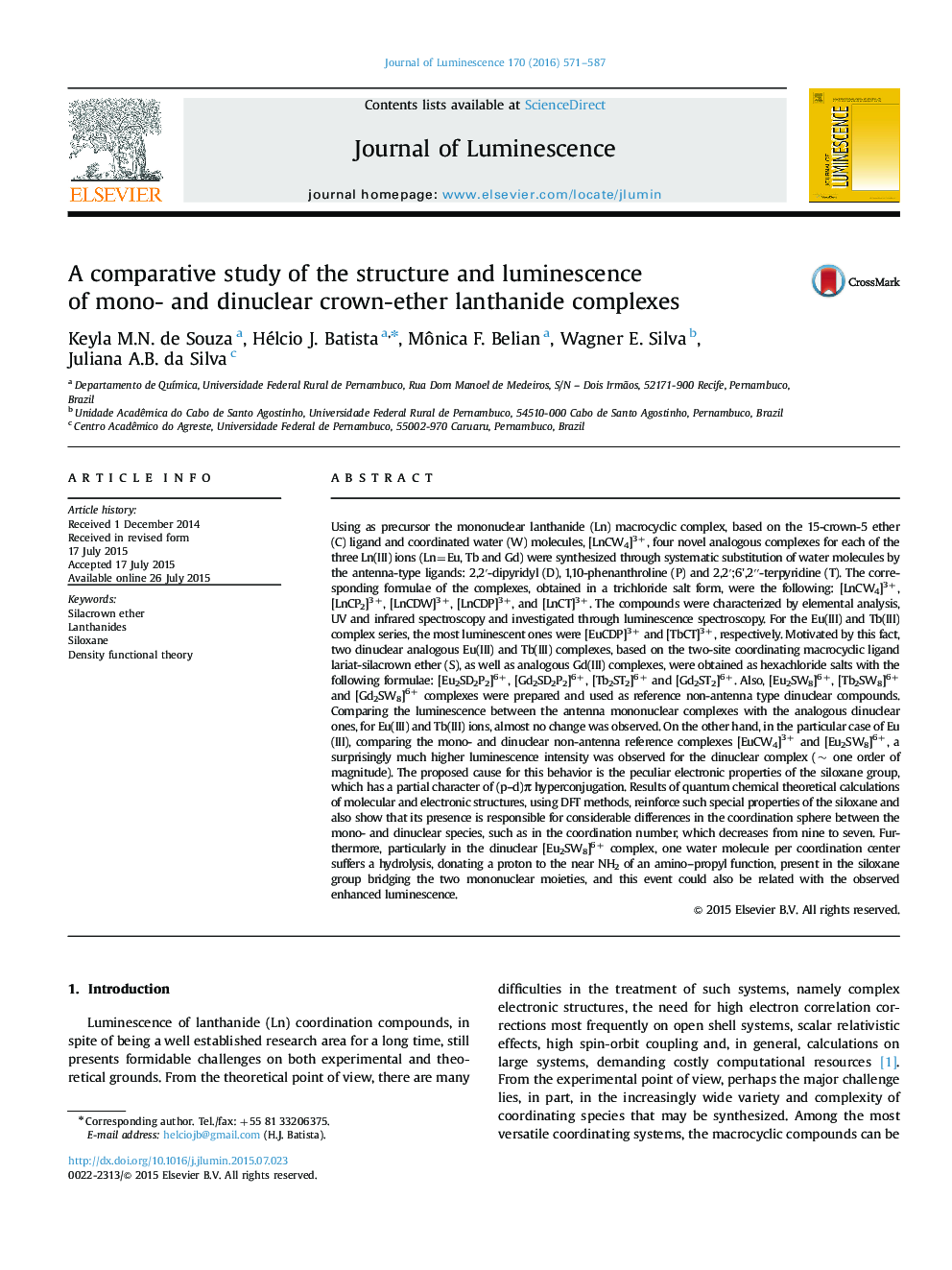| Article ID | Journal | Published Year | Pages | File Type |
|---|---|---|---|---|
| 5399023 | Journal of Luminescence | 2016 | 17 Pages |
Abstract
Using as precursor the mononuclear lanthanide (Ln) macrocyclic complex, based on the 15-crown-5 ether (C) ligand and coordinated water (W) molecules, [LnCW4]3+, four novel analogous complexes for each of the three Ln(III) ions (Ln=Eu, Tb and Gd) were synthesized through systematic substitution of water molecules by the antenna-type ligands: 2,2â²-dipyridyl (D), 1,10-phenanthroline (P) and 2,2â²;6',2â²â²-terpyridine (T). The corresponding formulae of the complexes, obtained in a trichloride salt form, were the following: [LnCW4]3+, [LnCP2]3+, [LnCDW]3+, [LnCDP]3+, and [LnCT]3+. The compounds were characterized by elemental analysis, UV and infrared spectroscopy and investigated through luminescence spectroscopy. For the Eu(III) and Tb(III) complex series, the most luminescent ones were [EuCDP]3+ and [TbCT]3+, respectively. Motivated by this fact, two dinuclear analogous Eu(III) and Tb(III) complexes, based on the two-site coordinating macrocyclic ligand lariat-silacrown ether (S), as well as analogous Gd(III) complexes, were obtained as hexachloride salts with the following formulae: [Eu2SD2P2]6+, [Gd2SD2P2]6+, [Tb2ST2]6+ and [Gd2ST2]6+. Also, [Eu2SW8]6+, [Tb2SW8]6+ and [Gd2SW8]6+ complexes were prepared and used as reference non-antenna type dinuclear compounds. Comparing the luminescence between the antenna mononuclear complexes with the analogous dinuclear ones, for Eu(III) and Tb(III) ions, almost no change was observed. On the other hand, in the particular case of Eu(III), comparing the mono- and dinuclear non-antenna reference complexes [EuCW4]3+ and [Eu2SW8]6+, a surprisingly much higher luminescence intensity was observed for the dinuclear complex (~ one order of magnitude). The proposed cause for this behavior is the peculiar electronic properties of the siloxane group, which has a partial character of (p-d)Ï hyperconjugation. Results of quantum chemical theoretical calculations of molecular and electronic structures, using DFT methods, reinforce such special properties of the siloxane and also show that its presence is responsible for considerable differences in the coordination sphere between the mono- and dinuclear species, such as in the coordination number, which decreases from nine to seven. Furthermore, particularly in the dinuclear [Eu2SW8]6+ complex, one water molecule per coordination center suffers a hydrolysis, donating a proton to the near NH2 of an amino-propyl function, present in the siloxane group bridging the two mononuclear moieties, and this event could also be related with the observed enhanced luminescence.
Related Topics
Physical Sciences and Engineering
Chemistry
Physical and Theoretical Chemistry
Authors
Keyla M.N. de Souza, Hélcio J. Batista, Mônica F. Belian, Wagner E. Silva, Juliana A.B. da Silva,
